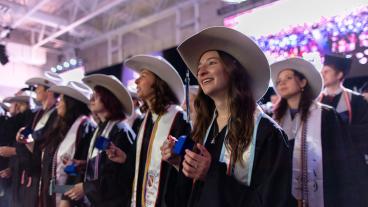A Colorado School of Mines professor is working to remove chemicals and potentially harmful substances from the groundwater supply in Fountain, Colorado.
Chris Bellona, assistant professor in the Civil and Environmental Engineering Department, and a team of researchers have just finished Phase I of their project, testing different ways to remove perfluoroalkyl substances from the city’s groundwater supply.
“Various municipalities across the U.S. are struggling with these perfluoroalkyl substances,” Bellona said.
Perfluoroalkyl substances, or PFASs, are a large group of man-made chemicals used in a wide variety of products, often to make them more stain-resistant, waterproof or nonstick. The health effects of PFASs in humans are not well understood, but studies have found that animals exposed at high levels resulted in changes in the function of the liver, thyroid and pancreas, and changes in hormone levels.
Communities near airports and firefighting training areas that have used aqueous film-forming foams to fight fuel fires have been especially affected.
“The chemicals that are in these foams get into the ground and into the groundwater and they are mobile and they don’t break down,” Bellona said. “In the U.S., there’s an estimated five million people who have these chemicals in their drinking water supplies.”
This includes municipalities near Colorado Springs. The three utilities that still have groundwater available for use are Security, Widefield and Fountain. This led to Bellona’s current project, “Pilot scale evaluation of the efficacy of granular activated carbon for perfluoroalkyl substance removal at the City of Fountain.”
“We starting working with the city of Fountain because they traditionally use groundwater part of the year and their levels of PFOA and PFOS exceed the EPA health advisory limit,” Bellona said. “They are going to need to put in a treatment system using granular activated carbon (GAC). They approached us to do a pilot scale study.”
GACs can be made in different ways, but it is usually coal burned in the absence of oxygen, then activated. With a large surface area, GACs can absorb large amounts of contaminants.
“The PFASs are relatively hydrophobic, so they stick to the carbon,” Bellona said. “Activated carbon works for a variety of contaminants, but eventually becomes exhausted. Part of this study was to look at how long we could operate the carbon before we have breakthrough of the contaminants.”
The study evaluated four different carbons side by side for the city’s groundwater.
“There are a lot of carbon options but it hasn’t been established which could be most effective,” Bellona said. “The goal of this project is to learn more by using four commercially available options.”
The next phase will compare the effectiveness of the top-performing activated carbon option to ion exchange, another way of filtering perfluoroalkyl substances, and the cost-benefit trade-offs.
“Ion exchange is more expensive but it can be regenerated on site; however, you have to deal with this waste stream,” Bellona said. “That may be more advantageous than dealing with the spent carbon residual. In addition, ion exchange resin may provide for longer treatment for these compounds compared to activated carbon.”
“These compounds are very recalcitrant and there is no silver bullet that has been developed for treatment,” Bellona said. “We aren’t only looking at these substances above the health advisory level. We are looking at a wide variety of these substances and how well activated carbon works on them.”
On this research project, Bellona has been working with diverse faculty and staff from the Civil and Environmental Engineering Department and the Advanced Water Technology Center including associate professor Chris Higgins, professor Tzahi Cath, research assistant Tani Cath, lab manager Kate Spangler, research associate and facility manager Mike Veres, as well as Charlie Liu, a doctoral student in Civil and Environmental Engineering Department.
CONTACT
Joe DelNero, Digital Media and Communications Manager, Communications and Marketing | 303-273-3326 | jdelnero@mines.edu
Mark Ramirez, Managing Editor, Communications and Marketing | 303-273-3088 | ramirez@mines.edu



